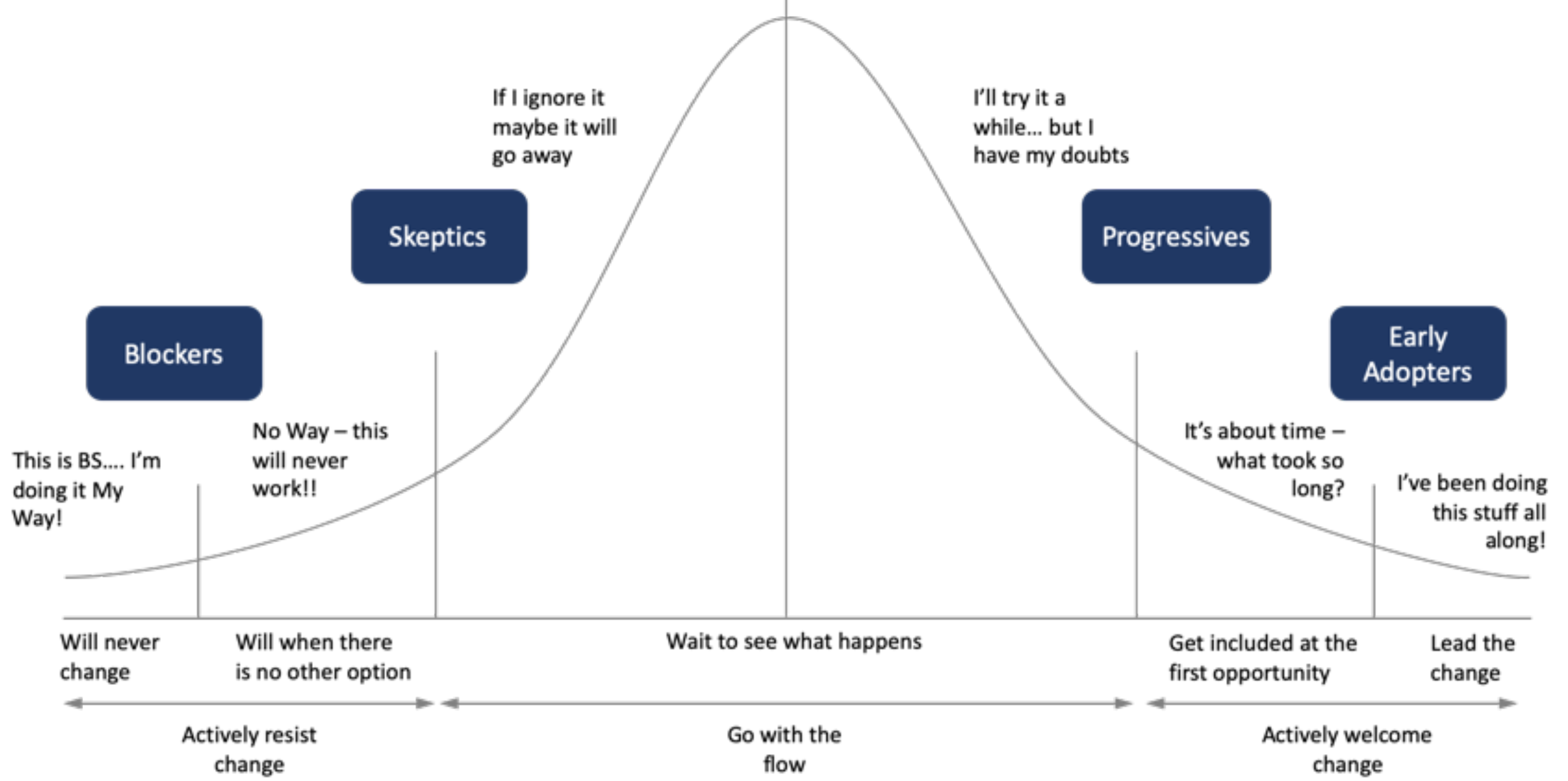3.3.2.1
Building a TAM Organization
Agency leadership and TAM program man¬agement have extra roles to play as communicators, advocates, mentors and change agents. They may require extra tools to help them fulfill their roles, and even to cope with the TAM initiated changes.
People tend to have similar reactions to any change that will challenge the status quo. Those in favor of the TAM program changes, or those more adaptable to change, may more quickly move through the process of transitioning to new and improved ways of doing things. Figure 3.2, An individual’s response when presented with change, illustrates the range of receptivity to change and how to understand it so that it can be planned for.
TIP
Implementing TAM or improving TAM business processes involves changing the way the agency conducts business. It involves people, processes, and/or technology. TAM improvement is a change process so it should involve change management techniques.
Managers need to be equipped to advance more quickly so they can fulfill their support role successfully, even while they themselves are experiencing the effects of the changes the asset management program is implementing.
Managers need to be equipped to advance more quickly so they can fulfill their support role successfully, even while they themselves are experiencing the effects of the changes the asset management program is implementing.
Asset Management Early Adopters
These are members of the organization who are already prepared to adopt asset management best practices, have been advocating for it in the past and are ready to see the change happen.
What They Need
- Communication channels that are targeted to manage expectations and minimize frustration
- Pilot projects that have good asset data, and can better model and inform tactical and strategic decision-making
- Opportunities to showcase early wins in the TAM transition
Asset Management Progressives
Asset management progressives are predis¬posed to see TAM as a change for the better. They see asset management as a good idea, are willing participants in the change, but need to understand the objectives and what the future will look like.
What They Need
- Communication channels that report on progress and highlight expected future improvements
- Training and reinforcement that emphasizes how they can help implement the change and how their own role may change
Asset Management Skeptics
Skeptics are predisposed to see TAM as a change for the worse. They are wary of proposed changes, and feel existing processes are effective and do not need to be “fixed.” Messaging targeted to (or delivered by) Progressives will alienate this group and increase resistance.
What They Need
- Much more detail on how the TAM Program will be implemented and why the change is necessary
- Process mapping and other group activities that highlight where problems exist
- Once they are convinced that change is required, they will benefit from training
Asset Management Blockers
TAM Blockers are strongly attached to existing processes and will resist change. These individuals will take the longest amount of time to adjust. Some may never be able to make the change, and may choose to leave the agency if the change is implemented.
What They Need
- Understanding of the root cause of their resistance, which may be related to a loss of control, status within the agency, or loyalty to past managers or staff
- Communication targeted to help them realize that TAM Program improvements within the agency are necessary.
- Activities or celebrations that recognize and acknowledge the foundational aspects of past good work over the agency’s history
